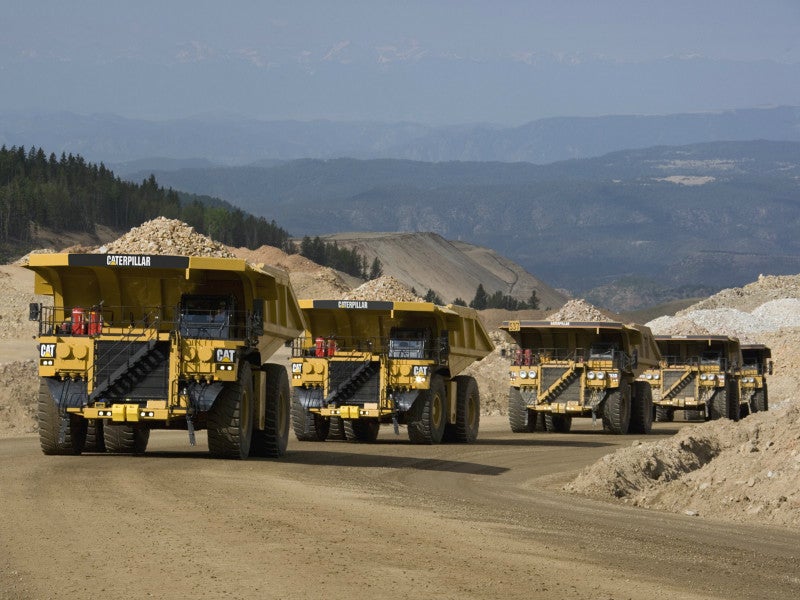
Caterpillar is one of the world’s best-known manufacturers of construction and mining equipment, diesel and natural gas engines, industrial gas turbines and diesel-electric locomotives and has over 90 years’ experience working with miners and the mining industry.
The company’s fatigue services project manager, Todd Dawson has spent the past 25 years focusing solely on fatigue management and shift work optimisation at different operations, including mining, transportation and oil/gas industries. At Caterpillar, he works closely with the technology teams to develop fatigue management countermeasures and systems.
What are the most risky but common human behaviours related to fatigue, distraction or stress and how common are they?
Todd Dawson (TD): One of the greatest risks is a person who is fatigued but may not appreciate the loss of mental and physical capabilities. They may realise they are tired and sleepy, but think they “feel fine to work”. However, fatigue decreases reaction time, cognitive processing and the ability to think several steps ahead.
For an equipment operator, these effects increase the risk of incidents and research into fatigue and distraction shows as we become more tired while driving, our brains begin to search for stimulation to help stay awake. Unfortunately, this often leads to distracted driving. So, while a fatigued person may or may not experience a microsleep while working, they may experience increased distraction, leading them to take their eyes from their work.
What do you recommend line management and supervisors do on a weekly/daily basis to foster a safety-first approach to managing fatigue?
TD: One of the key elements of truly managing fatigue is to first understand and believe that we all experience fatigue. People come to work to do their job, and to be safe and alert. However, long hours, night shifts, variable sleep opportunities and stress often disrupt our ability to get good rest and come to work alert and fit for duty.
One of the best things front line supervisors can do is to stop seeing and talking about fatigue and sleepiness as a negative or weakness. When operators feel comfortable talking with each other, as well as managers, about their own personal fatigue, everyone benefits.
Caterpillar has developed fatigue management technologies for its mine site machinery, how can technology help reduce the associated risks?
TD: We have added several technologies to assist our customers in managing their employees’ safety and alertness. One of these, the Driver Safety System (DSS), for example, is a camera-based system that detects facial characteristics of the driver in small two to three second video clips and alerts them in real time if they are experiencing fatigue events, microsleeps or distraction events.
The video clip is sent to our 24/7 Monitoring Center, where it is reviewed and categorised. For a verified fatigue event, the centre contacts a site within two minutes, to initiate a Fatigue Intervention Plan (FIP). This can include communicating privately with the driver, or suggest a short break if incidents occur.
Besides technology and design, what else can help mine operators manage this issue?
TD: It is important to realise that technology is only one piece of a larger initiative to manage fatigue. In a full Fatigue Risk Management System, technology supports other initiatives that typically include training and education about sleep and fatigue, policies and procedures, schedule/roster optimisation, assessing the environment and many other areas.
Do workers welcome fatigue management technology or find it a bit intrusive?
TD: The idea of an intrusive technology has become less of an issue over time, especially as cellphone cameras, video monitoring and security cameras become much more ingrained in our world. For those who have a higher degree of skepticism, the benefit shows itself over time.
In your experience how active and focused are mine operators in implementing fatigue management procedures and policies?
TD: Twenty-five years ago, fatigue was an afterthought. It was the common opinion that fatigue is solely the responsibility of the individual. Over time, the evolution of fatigue management has been positive and many mines are now extremely proactive in implementing technologies to manage and mitigate fatigue.
However, I must caution against reliance on technology and training and education alone. You can provide the best training available and even when the individual does everything they can and uses the information, if the culture, environment, policies and procedures, or shift schedule are not in line with proper fatigue management, the training is difficult to make use of.
I see fatigue management in much the same way a mine manager might see production. If you are not constantly looking for ways to improve, you are likely falling behind. We need to make fatigue management part of our daily lives both at work and at home.



